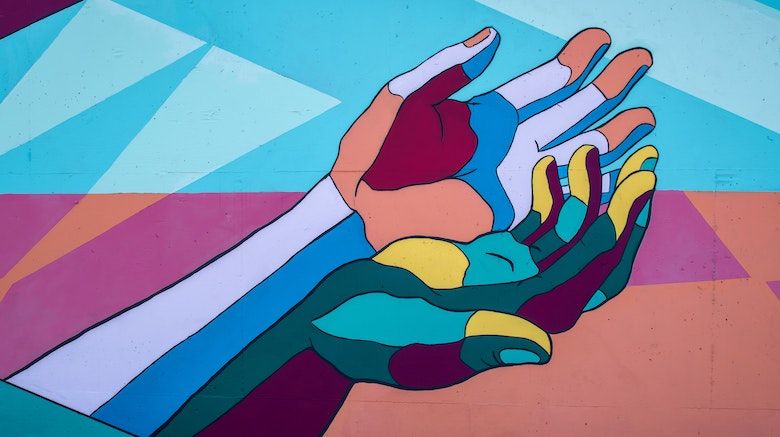Therapist, artist and educator Kristina Diaz discussed the benefits of art therapy this month during a virtual seminar presented to the College community.
Diaz shared the importance of emotional expression, and how the practice of art therapy can facilitate it.
“I wanted to explain the difference between art therapy and actual art class. If you go to an art class, you go to learn techniques, and everyone is going to be learning the same thing,” she said. “Whereas in art therapy, everyone’s going to look different. There is no right or wrong way to create. During the process, the art becomes the medium focused on your emotions, feelings and thoughts.”
Diaz shared her unique experience as a deaf person and how art therapy has empowered her. She also copes with Neurofibromatosis type 2 (NF2), a disorder characterized by the growth of noncancerous tumors in the nervous system. It affects 1 in every 25,ooo people. She encouraged the seminar participants to use art therapy in addressing their own life challenges.
“Art therapy is essentially two different things, art and psychology,” said Diaz, who holds a master’s degree in creative arts therapy and is an art instructor and community rehabilitation counselor. “Human development, behavior, personality and mental health are all important to sculpt art therapy.”
During the seminar, Diaz asked the participants to take out a piece of paper, along with crayons, colored pencils, or markers (note: at registration, participants were asked to have the supplies at hand). She told them to take on an art therapy activity that required them to draw while looking away from the paper.
When they looked back at their papers, the participants were encouraged to make something out of the shapes that were scribbled onto their paper. The various shapes could be turned into anything, depending on the creator’s imagination, Diaz said.
“It helps people understand their art expression. Art therapy offers you the opportunity to create something lasting,” she said. “Creating art enhances life. It naturally generates communication and exchanges, and helps others reach their creative potential.
“Art therapy is possible for everyone. You do not need it to have an artistic talent,” she continued. “I continue to provide art therapy with both hearing and deaf populations, who live with mental illness. Art therapy in schools can be crucial to a child’s development, especially those with special needs.”

